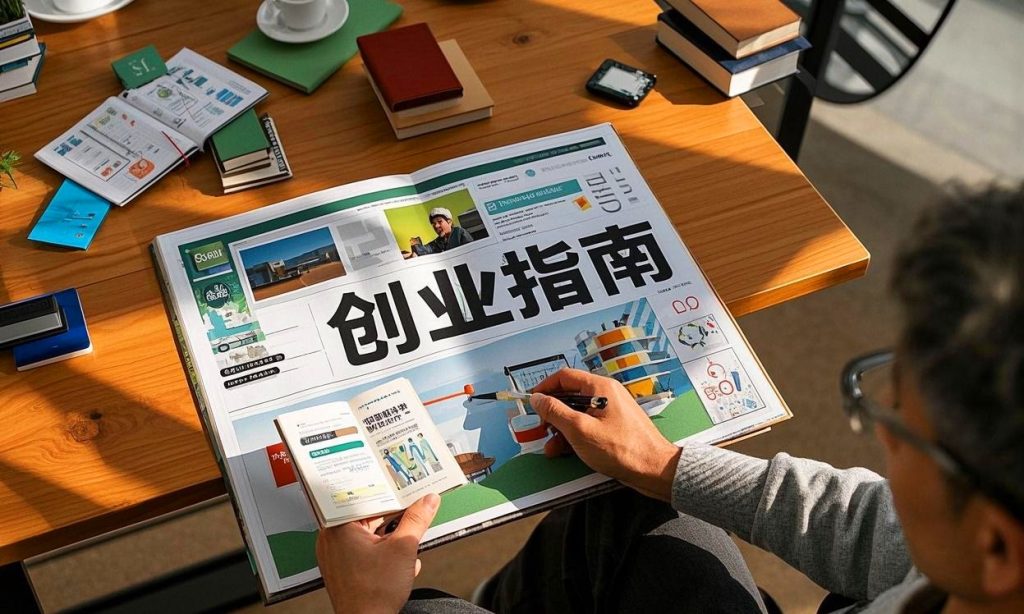
Not Enough Subsidies? Smart Entrepreneurs Are Making Money from “Saved Childcare Expenses”
Solving the Problem: High Childcare Costs and Insufficient Subsidies
In today’s society, childcare costs have become a significant burden for many families. From milk powder and diapers to early education and interest classes, every expense makes parents feel overwhelmed. Although the government and society provide certain childcare subsidies, these subsidies are often just a drop in the bucket and difficult to cover the actual needs. Facing this pain point, smart entrepreneurs are starting from the perspective of “saving money” to tap into the market opportunity of “saved childcare expenses”.
Limitations of Childcare Subsidies
- Limited Amount: The amount of most childcare subsidies is relatively low, making it difficult to meet the actual needs of families.
- Narrow Coverage: Subsidies usually focus on specific areas (such as medical care or education), while childcare expenses are diverse.
- Complicated Application Process: Some subsidies require a complex application process, increasing the burden on parents.
Opportunities for Entrepreneurs
Since subsidies cannot fully solve the problem, entrepreneurs can start from the following aspects:
– Provide Cost – effective Childcare Products and Services: Optimize the supply chain or innovate the business model to reduce parents’ expenses.
– Sharing Economy Model: Utilize idle resources to reduce waste.
– Digital Tools: Help parents manage childcare expenses more efficiently.
Solutions: How to Make Money from “Saved Childcare Expenses”
1. Cost – effective Childcare Products
Entrepreneurs can provide cost – effective products in the following ways:
– Directly Connect with Manufacturers: Reduce intermediate links and lower costs.
– Subscription Model: Lower the single – purchase cost through long – term subscriptions.
– Second – hand Trading Platform: Enable parents to buy second – hand childcare products at a lower price.
Case: Maternal and Infant E – commerce Platform
Some maternal and infant e – commerce platforms offer lower – priced necessities such as milk powder and diapers to parents through membership systems or group – buying models. For example, a certain platform reduces the price of milk powder by 30% through the group – buying model, attracting a large number of users.
2. Sharing Economy Model
The sharing economy can effectively reduce resource waste and lower childcare costs:
– Toy Rental: Parents can rent toys as needed, avoiding the problem of toys being left idle after purchase.
– Clothing Sharing: Since infants’ clothing has a short usage cycle, the sharing model can significantly reduce expenses.
Case: Toy Rental Platform
A startup company launched a toy rental service. Parents only need to pay a monthly fee, and their children can play with different kinds of toys. This model not only saves money but also solves the problem of toy idleness.
3. Digital Tools
Digital tools can help parents manage childcare expenses more efficiently:
– Price Comparison Tools: Help parents find the most affordable childcare products.
– Budget Management APP: Record and analyze childcare expenses to avoid overspending.
Case: Childcare Budget Management APP
A certain APP provides optimization suggestions for parents’ childcare expenses through intelligent algorithms. For example, it reminds parents to stock up during promotional seasons or buy necessities at specific times.
4. Community Mutual – assistance Model
The community mutual – assistance model can lower childcare costs:
– Carpooling for School Runs: Parents can carpool to pick up and drop off their children, sharing the costs.
– Group – buying: Purchase childcare products through community group – buying to enjoy wholesale prices.
Case: Community Group – buying Platform
A community group – buying platform organizes parents to purchase milk powder, diapers, etc. collectively. Through bulk purchasing, the cost is reduced, and parents can save 20% – 30% of their expenses.
Additional Cases: Practices of Successful Entrepreneurs
Case 1: A Second – hand Maternal and Infant Products Platform
This platform focuses on the trading of second – hand maternal and infant products. Parents can buy high – quality second – hand baby strollers, toys, etc. at low prices. The platform also provides strict quality inspection services to ensure product safety. Within one year of its launch, the number of users exceeded 500,000, and the transaction volume reached hundreds of millions of yuan.
Key to Success:
- Trust Mechanism: A strict quality inspection and user evaluation system.
- Environmental Protection Concept: Attract parents who pay attention to environmental protection.
Case 2: An Early Education Sharing Platform
This platform provides sharing services for early education courses. Parents can purchase single classes or short – term course packages as needed, avoiding one – time high – cost payments. The platform also cooperates with many early education institutions to provide a variety of course options.
Key to Success:
- Flexibility: Meet parents’ needs for diverse courses and low costs.
- Cooperation Model: Achieve a win – win situation with institutions and reduce operating costs.
Conclusion
The high childcare costs are a pain point for many families, and the limitations of subsidies provide entrepreneurs with a huge market opportunity. By providing cost – effective products, adopting the sharing economy model, using digital tools, and implementing the community mutual – assistance model, entrepreneurs can start from the perspective of “saving money”, help parents reduce the burden, and at the same time achieve commercial value. In the future, innovation in this field will continue to deepen, bringing more benefits to more families.
补贴不够花?聪明创业者正在赚“省出来的育儿钱”|创始人Q&A
- Startup Commentary”Building LLMs: The Knowledge Graph Foundation Every AI Project Needs”
- Startup Commentary”The 17th Year of Tmall Double 11 and the New Map Rewritten by AI”
- Startup Commentary”How to Prepare Your Data for Artificial Intelligence”
- Startup Commentary”Small and Medium-sized Banks: “Cutting the Tail” in Loan Assistance”
- Startup Commentary”The Six AI Giants on Stage: AGI Is No Longer a “Future” Thing”





